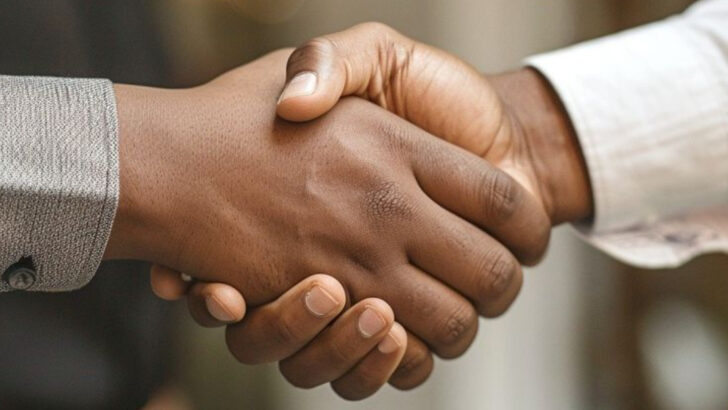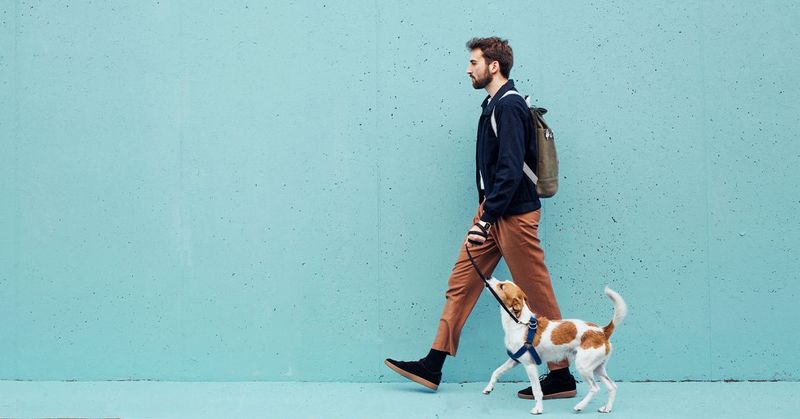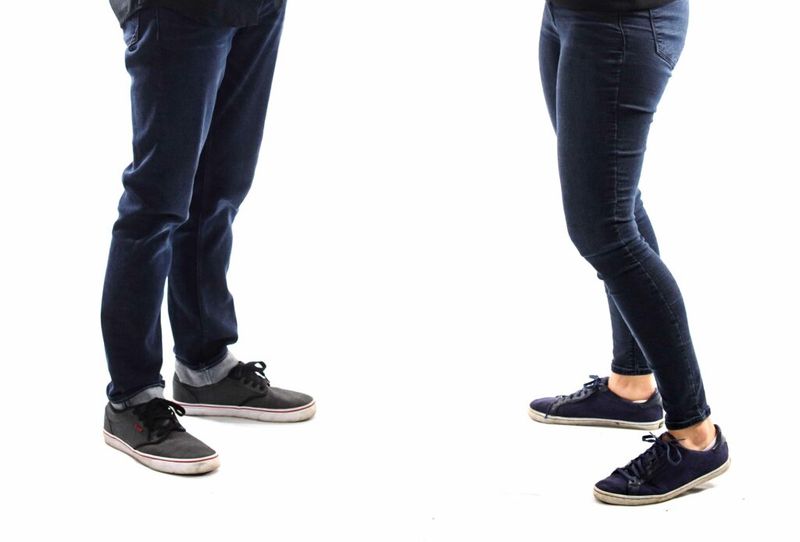Ever caught yourself wishing you could project strength without saying a single word? Turns out, your body’s been doing the talking all along.
Whether you’re facing a boardroom, a new social circle, or your own reflection after a long day, these 18 body language habits let the world know you’re quietly powerful—even when you don’t feel like shouting it from the rooftops.
Each move is a subtle rebellion against old insecurities and the urge to shrink yourself. Welcome to a guide that feels less like a lecture and more like swapping secrets with your most self-aware friend.
1. Maintain an Open Posture
Ever notice how you used to wrap yourself up like a human pretzel whenever you felt vulnerable? There was safety in crossed arms and hunched shoulders—a fortress of elbows. But now, you roll your shoulders back, let those arms hang loose, and face the world like you’re ready for whatever comes next.
It’s not about being on display, it’s about not hiding anymore. Open posture says: I’m good, I’m comfortable, and I have nothing to defend. People can sense when you’re no longer building invisible walls just to make it through a conversation.
Sometimes, the bravest thing you can do is simply occupy your space. If you ever start to feel the urge to shrink again, remember: you’re allowed to take up room. No apology required.
2. Stand Tall with Relaxed Shoulders
Remember slouching at your desk, hoping nobody would notice you existed? Now, you catch yourself standing tall in the elevator, shoulders loose, like you’ve finally outgrown your shell. There’s this freedom in letting gravity do its thing without caving to it entirely.
Standing tall isn’t about acting like a statue. It’s about feeling rooted, even if the ground feels unsteady. Letting your shoulders relax whispers to the world: stress isn’t the boss of me anymore.
It’s strangely satisfying to realize you can face forward—literally and figuratively—without the weight of self-doubt riding on your back. People can’t help but notice when you occupy your full height.
3. Make Intentional Eye Contact
There was a time you’d study your shoes like they held the secrets of the universe. Now, you meet people’s eyes and the world doesn’t end—imagine that. Intentional eye contact is like a superpower you didn’t know you unlocked.
It’s not about staring down everyone in your path; it’s about showing up, present and unafraid. Every glance says, “I see you. I’m here.” It’s intimate, sometimes a little scary, but always worth it.
You might catch someone off guard when you actually connect. That’s okay—let them wonder where this new energy came from. It’s all you, finally showing up.
4. Use Purposeful Gestures
Ever tried to talk with your hands tied behind your back? It’s like a performance with half the script missing. Purposeful gestures aren’t about miming invisible boxes—they’re the punctuation marks to your story.
You catch yourself emphasizing a point, and it lands better than any PowerPoint. People actually watch, listen, and remember more. It’s surprisingly empowering to realize your hands don’t betray your nerves anymore—they amplify your confidence.
A little movement speaks volumes. The next time you’re mid-conversation, give your hands permission to join in. You might just find your words come alive.
5. Avoid Fidgeting
You used to tap, twist, and fidget like your chair had a built-in earthquake feature. Now you sit still, radiating that quiet, unshakeable energy. Sometimes, not moving is the boldest move you can make.
There’s something magnetic about someone who doesn’t need to fill silence or space with nervous energy. Stillness says you’re comfortable—maybe even a little mysterious. People are drawn in, curious about what’s going on beneath the calm.
This is about self-trust. When your hands are steady and your foot isn’t doing the riverdance, you’re telling the world (and yourself): I’m here, and I’m unbothered.
6. Smile Genuinely
Remember forcing a smile at awkward parties, hoping it would hide the panic inside? Now, your grin is the real deal—no rehearsals needed. A genuine smile is a quiet flex, letting people know you’re comfortable in your own skin.
It’s not about grinning like you’ve won the lottery; it’s that easy, relaxed smile that sneaks up when you’re just… content. Eyes crinkle, cheeks lift, and suddenly strangers want to talk to you in line at the grocery store.
A real smile says you’re not faking it for anyone’s comfort. It’s the face of freedom—and maybe, just maybe, a little mischief.
7. Keep Your Chin Up
You remember the days when your chin could practically sweep the floor. Now, it’s all about lifting that head just enough to see the world straight on. It’s a small shift, but it changes everything.
A raised chin isn’t arrogance—it’s acceptance. You’re not hiding; you’re acknowledging your place in the world, unapologetically. It’s how you tell yourself (and everyone else) that you’re worthy of being seen.
Sometimes, confidence starts with a posture adjustment. The next time self-doubt tries to drag you down, lift your chin and let the world catch a glimpse of the real you.
8. Lean In Slightly
Ever catch yourself leaning so far back you could blend into the wallpaper? Now you lean in—not too much—just enough to say, “I’m in this moment with you.” It’s the body’s way of putting up a neon sign: “I care.”
A slight forward tilt is an invitation, not an interrogation. It tells the other person you’re present, engaged, and open to whatever comes next. Commitment without pressure—that’s the vibe.
You might be surprised how much rapport you build just by showing interest. It’s a subtle change, but it’s often the difference between being a background character and being truly noticed.
9. Maintain a Calm Demeanor
Chaos all around, and you’re the calm in the eye of the storm. There’s an electric kind of power in not reacting to every blip on your radar. You don’t need to flinch at every loud noise anymore—other people do enough of that for everyone.
Your calm demeanor gives people permission to relax, too. Even when your insides are doing cartwheels, your face is a masterclass in composure. That’s not denial—it’s emotional stamina in action.
Sometimes, the strongest thing you can do is nothing. Let the world whirl; you stay steady.
10. Use a Firm Handshake
A limp handshake used to feel like a metaphor for your approach to life—cautious, half-hearted, unsure. These days, your handshake has some conviction behind it. It’s not a competition, just a clear sign: you’ve arrived, and you’re not afraid to connect.
There’s something old-school charming about a firm handshake. It bridges generations, closes deals, and—let’s be honest—makes you instantly memorable. People notice the difference between a handshake that says, “nice to meet you” and one that says, “I actually mean it.”
When in doubt, go for firmness, not finger-crushing. Confidence, after all, doesn’t have to hurt.
11. Avoid Crossing Arms
Once upon a time, crossing your arms was your go-to move. It felt safe, even if it screamed “leave me alone.” Now, your arms hang free, and you’re noticeably more open—both literally and figuratively.
It’s wild how such a small adjustment can change the way people respond to you. Open arms make you seem approachable, less guarded. You find conversations start easier, and people gravitate toward your newfound warmth.
Liberation is sometimes as simple as letting your guard down—one elbow at a time. Trust me, the world’s a lot friendlier when you meet it with both hands.
12. Match Facial Expressions to the Situation
Ever catch yourself plastering on a polite smile while your soul was quietly crying for help? Now, your face is refreshingly honest—what you feel is what you show. Matching your expressions to the moment takes guts, but it’s wildly freeing.
You don’t have to play poker with your feelings just to fit in. People appreciate authenticity, and it opens doors you didn’t know existed. Suddenly, you’re connecting, not just performing.
There’s a relief in letting your face be as real as your words. Authenticity isn’t just brave—it’s magnetic.
13. Use a Calm, Controlled Voice
Have you ever heard your own voice tremble when nerves took the wheel? These days, you speak with a measured calm, letting each word land gently but firmly. Your voice isn’t loud, but it’s got a steady current that people respect.
It’s not about sounding robotic or rehearsed. It’s about owning your space—verbally and physically. You can disagree, clarify, or inspire without raising your volume above a friendly dinner conversation.
People start to listen when you stop trying so hard to be heard. That’s the kind of subtle strength nobody forgets.
14. Avoid Over-Apologizing
Once upon a time, every sentence started with “sorry,” as if pre-emptive guilt was a requirement. No more. You reserve apologies for when they’re truly needed—like accidentally knocking over a colleague’s coffee, not for having an opinion.
Cutting back on apologies feels like reclaiming your voice. It lets you state your needs, share ideas, and sometimes even disagree—without the emotional baggage of guilt. You’re not rude; you’re just not shrinking yourself to fit anybody else’s comfort zone.
It’s a relief to realize: you don’t owe the world an apology for existing. That’s confidence talking.
15. Point Your Feet Toward What Matters
Here’s a weird little secret: your feet are the tattletales of your attention span. Used to be, you’d angle them toward the exit—subconsciously half-gone before the chat even started. Not anymore. Now your whole body, from toes to nose, is invested in the moment.
Pointing your feet toward someone says, “You have my attention.” It’s respect, focus, and engagement—without ever saying a word. People can feel when you’re actually present (and not just waiting to bolt).
Try it out. You’ll be amazed how much more connected your conversations feel.
16. Embrace Pauses and Silences
Remember filling every gap in conversation with nervous chatter? Silence used to feel like a verdict—awkward, uncomfortable, maybe even threatening. Now, you let moments breathe and trust that not every second needs to be filled.
Pauses are your new punctuation. They give weight to your words and space for others to join in. You’re not afraid of a little quiet—it’s where the best thoughts hide.
It takes confidence to leave room for silence. Turns out, some of the most powerful things are said in the spaces between.
17. Avoid Overly Defensive Touches
Used to be, you’d cover your mouth, rub your neck, or fiddle with your collar whenever the spotlight turned your way. Defensive touches were like a nervous tic—a way to shield yourself from the world. Now, your hands stay where everyone can see them, and you’re not hiding behind fidgety habits.
Letting go of these self-soothing moves is a quiet act of courage. Each time you resist the urge, you’re telling yourself you can handle whatever’s coming. The more you practice, the more natural it feels.
Being seen, unshielded, is a new brand of strength. And it suits you.
18. Walk with Purpose
There’s nothing quite like the power walk—the kind that makes people wonder where you’re headed and what you’re about to conquer. Used to be, you drifted along, blending into the crowd, but now your stride has intention. Every step feels like a small declaration: I know where I’m going, and I’m not afraid to get there.
Walking with purpose doesn’t mean marching or rushing. It’s about moving forward with clarity and confidence—no apologies, no hesitation. You’re not just getting from point A to B; you’re making a statement with every footfall.
Others will notice. More importantly, so will you.



















